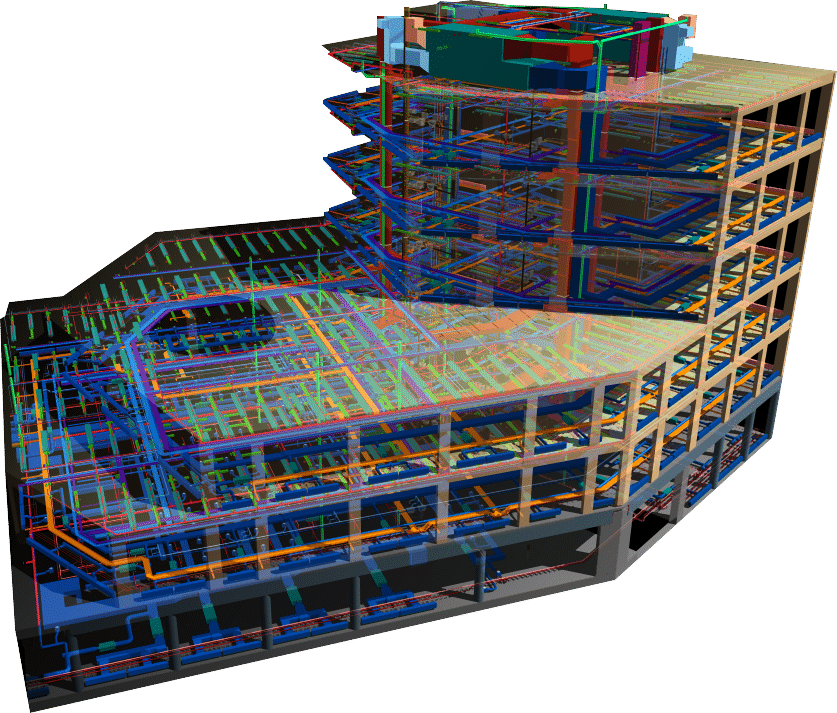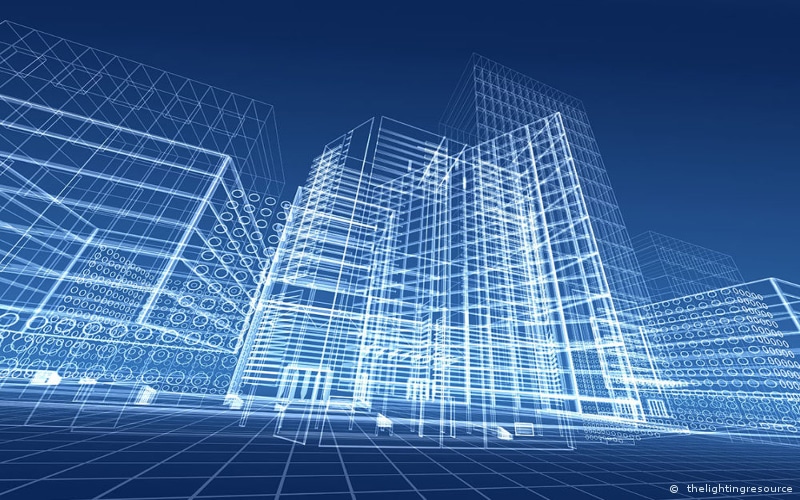An Overview of BIM standards
The definition of a BIM standard states that building information modeling is: “a digital representation of physical and functional characteristics of a facility. A BIM is a shared knowledge resource for information about a facility forming a reliable basis for decisions during its life-cycle; defined as existing from earliest conception to demolition”.
BIM is making a lot of noise in the construction industry at the moment, and everyone is interested in what BIM can do when it comes to construction and building expos. The history of BIM technologies and ideas goes back 50 years in the past, and it’s still evolving.
The more these technologies evolve, the more innovative solutions they bring along. BIM technologies allow for representing the intrinsic and physical properties of any building by tying buildings, as object-based models, to a database.
Modern BIM can improve the rendering power of engines and make the building of model components much more efficient by optimizing program environment and taxonomy with specific features.
Every time a change is made in the model during the project development phase, all changes and project drawings correspondingly adjust to all the updates and upgrades.
First international BIM standards
The first global BIM standards have been published by the International Organization for Standardization (ISO). These new standards include:
- Part 1: Concepts and Principles
- Part 2: Delivery phase of the assets
These are the new standards of ISO 19650, and they refer to digitization and organization of data about civil engineering works and buildings, including BIM. ISO 19650 is based on two British standards:
- BS 1192
- Public standard PAS 1192-1
Both standards significantly contributed to reducing user construction costs. According to ISO, these new global standards are aimed at providing a more effective framework to help contractors and designers by making their collaboration more efficient, improving all phases of construction.
Part 3 is on its way, and it will be focused on managing the operational phase of assets while Part 5 will deal with asset management, digital built environments, and BIM security.
BIM standards overview
UK Level 1 BIM standards
These are UK Level 1 BIM standards as identified in the Bew-Richards maturity diagram.
BS 1192 – Collaborative production of construction, engineering, and architectural information.
BS 1192 includes:
- BS EN ISO 9001 – Quality management
Requirements:
- BS EN ISO 13567-1 – CAD overview and principles
- BS EN ISO 13567-2 – CAD Codes and formats used in construction documentation
- ISO 12006-2 – Framework for classification information in construction works
- BS 7000-4 – Design management systems
- BS 8541-2 – Recommended 2D symbols of building elements for use in BIM
UK Level 2 BIM Standards
Level 2 BIM standards include 8 core standards.
1. 1 PAS 1192-2 – Specification for data management for the capital and delivery phase of construction projects using BIM
- BS EN ISO 9001 – Quality management systems
Requirements:
- BS ISO 10007 – Configuration management
- BS ISO/IEC 27001 – Information security management systems
Requirements:
- BS ISO 55000 – Asset management
- BS ISO 55001 – Management systems
Requirements:
- BS ISO 55002 – ISO 55001 application
- BS 1192:2007+A2:2016
- BS 1192-4:2014
- BS 7000-4:2013
- BS 8541-1 – Identification and classification of library objects for construction, engineering, and architecture
- BS 8541
- BS 8541-3 – Shape and measurement of library objects for construction, engineering, and architecture
- BS 8541-4 – Attributes for specification and assessment
- BS 10007
- BS 11000-1 – A framework specification
- BS 11000-2 – Guide to implementing BS 11000-1
2. PAS 1192-3 – Specification for data management for the operational phase of construction projects using BIM
- BS ISO 55000
- BS ISO 55001
- BS ISO 55002
- BS 1192:2007+A2:2016
- BS 1192-4:2014
- BS 6100-1:2004, BS ISO 6707-1:2004 – Civil engineering and building
- BS 8210 – Facilities maintenance management
- BS 8536-1 – Code of practice for facilities management
- BS 8572 – Facility related services
- BS 8587 – Facility information management
- BS ISO 15686-1 – Buildings and constructed assets
- BS ISO/IEC 27001 – IT, security techniques and security management systems
3. BS 1192-4 – Collaborative production of information
- BS 8541-1
- BS 8541-2
- BS 8541-3
- BS 8541-4
- BS 8544 – Maintenance costs during the in-use phases of buildings
- BS ISO 19148 – Linear referencing
- BS ISO 55000
- BS ISO 50001
- BS ISO 50002
- PAS 1192-5
4. PAS 1192-5 – Specification for security-minded BIM, smart asset management and digital built environments
- BS 8541-2
- PAS 1192-2
- BS 1192:2007+A2:2016
- PAS 1192-3
- BS 1192-4
- BS 7858 – Security screening of employees
- BS 8541-5 – Assemblies in construction, engineering, and architecture
- BS 8541-6 – Product declarations
- BS ISO 15686-4 – Service life planning using BIM
- BS 29481-1
- BS 29481-2
- ISO/TS 12911 – Framework for BIM
- PAS 754 – Software trustworthiness
- PAS 555 – Cybersecurity risk
5. BIM protocol
- CIC (Construction Industry Council) – Services for the RIM (Role of Information Management)
6. BS 8536-1 – Buildings infrastructure – Code of practice
7. Classification – Compliant implementation of ISO 12006-2:2015
- CESM4
- NBS Create coding
- RICS New Rules of Measurement – NRM 1
8. Digital Plan of Work (dPoW)
UK Level 3 BIM standards
Level 3 isn’t yet fully defined when it comes to in-depth details on standards. Level 3 includes:
- BS 8541-1
- BS 8541-3
- BS 8541-4
- BS 8541-5
- BS 8541-6
- ISO 12006-3 – Building construction – IFD
- ISO 16739 – IFC for facility management and construction industries
- ISO 29481-1 – Methodology and format of IDM
- ISO 29481-2 – Interaction framework of IDM
Quick BIM standards overview
British standards:
- BS 1192
- BS 1192 – 4
- BS 8541
- BS ISO 16739
- BS ISO 55000
- BS 7000-4
- BS 8536-1
- BS 8536-2:2016
- BS EN ISO 19650-1
- BS EN ISO 19650-2
Publicly available specifications
- PAS 1192-2
- PAS 1192-3
- PAS 1192-5
- PAS 1192-6
There’s a massive potential for BIM in industries like construction, engineering, and architecture. In fact, these industries have been increasingly integrating BIM technologies for digital construction and virtual design due to its amazing features like generative design, cloud computing, augmented reality, human-computer interaction, and sustainable design practices.
The trend of integrating BIM across different industries is affecting the process of the evolution of BIM. The more these modern and advanced building information modeling technologies continue to develop, the more industries will witness the rise of the construction tech that will change the way we design, develop, build, and construct.




